All-Electric Water Heating: Energy Saving Options

Public and private environmental organizations are working to reduce energy use and associated C02 emissions by creating incentives for owners and builders to electrify their homes. Electrification allows homes to be powered by solar or wind, or via a grid powered by 100 percent renewable resources.
For space heating, air source heat pumps have been a viable option well proven even in New England’s colder climate. But what about domestic hot water? Typical families currently utilize 20-25% of their home’s energy consumption for production of domestic hot water. As homes become tighter and more energy efficient, the space heating load is reduced, but the domestic hot water load might not, and thus can become closer to 50% of the total energy load.
Common inexpensive electric resistance water heaters (tank or tankless) require a lot of power to operate, and a typical residential Solar PV system may not cover this larger additional load. To reduce the load, a homeowner can first utilize water-saving fixtures and well-placed insulated piping. But to make a significant impact, the heating source needs to change. Two technologies standout: solar thermal and air-to-water heat pumps.
Solar thermal (or solar hot water) is a well-established world-wide industry popular in the USA ever since Jimmy Carter installed a system at the White House in 1979. This simple technology has not changed much over the years, as solar thermal collectors remain extremely efficient. In the northeast, when properly designed, these systems can cut annual electricity use by 75% or more when compared to electric resistance water heaters.
Solar hot water is a simple technology has not changed much over the years, as solar thermal collectors remain extremely efficient. In the northeast, when properly designed, these systems can cut annual electricity use by 75% or more when compared to electric resistance water heaters.



All-electric heat pump water heaters are another viable option. Also common throughout the world, these units use established heat pump technology (like that used in a refrigerator) to reduce energy use by 50% or more depending on the surrounding air conditions. Integrated units are popular in the USA especially in southern climates where cooling and dehumidification of surrounding air is an additional benefit. However, in New England cooling interior air during colder months can present problems.
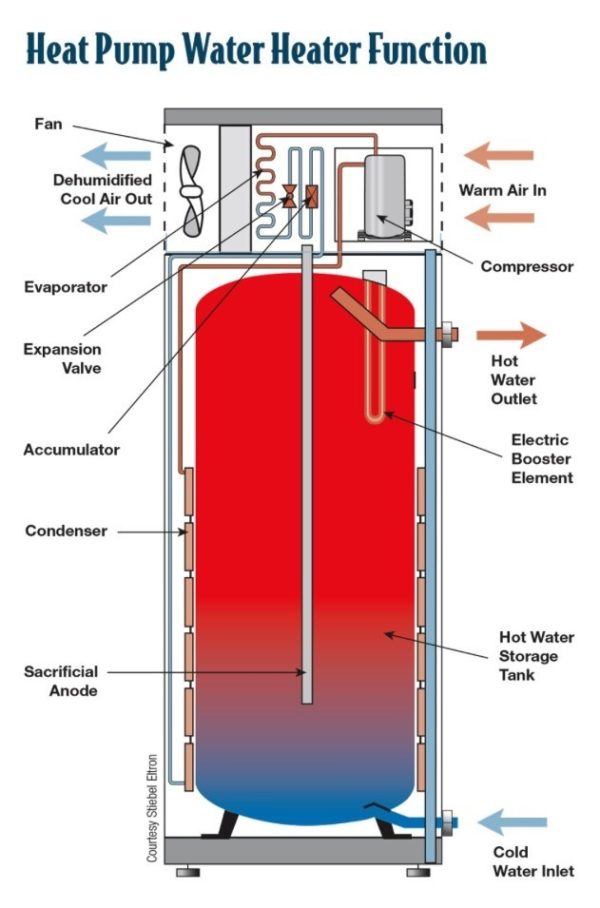
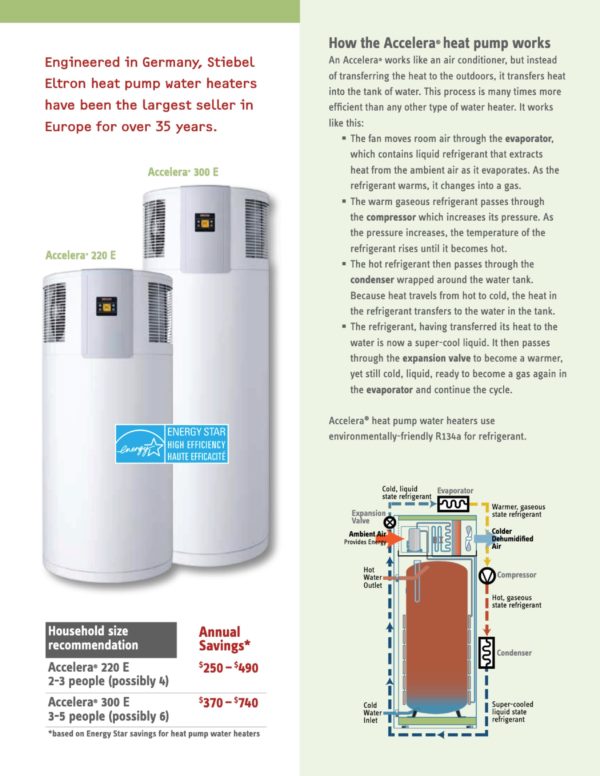
“Split” heat pump water heaters that move heat from outside the home’s envelope are popular in Europe and Japan. One version, “Solar assisted heat pump water heaters” (SAHPs), are an interesting option recently introduced to the US market. SAHPs are affordable and efficient and don’t have some of the challenges associated with integrated units. There is no “stealing” heat from the interior, no fan or associated noise, and no need for a condensate drain. The evaporator panel does not require perfect solar orientation, so it’s often mounted on an exterior wall near the tank rather than on a roof (see case study.) The unit has an integral electric element for backup during the coldest weather or periods of high hot water usage. Even when installed in New England’s cold climate, SAHPs use 50% less electricity than common electric resistance tanks.
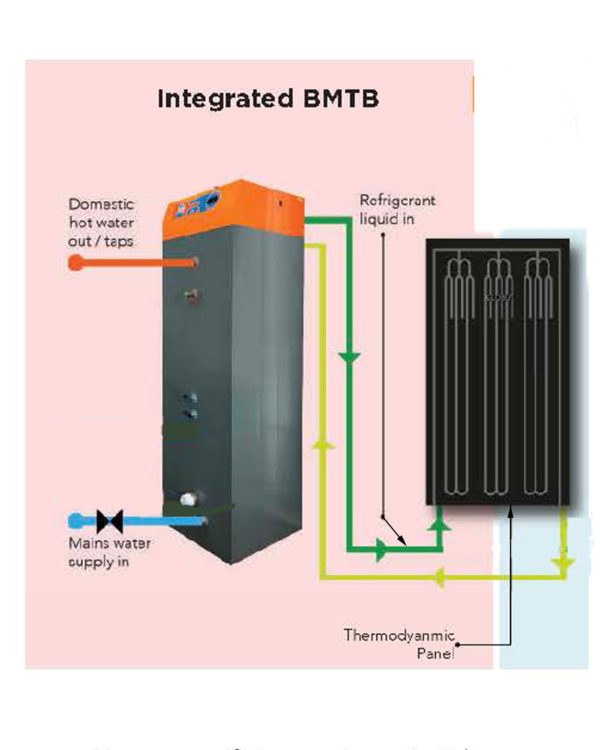
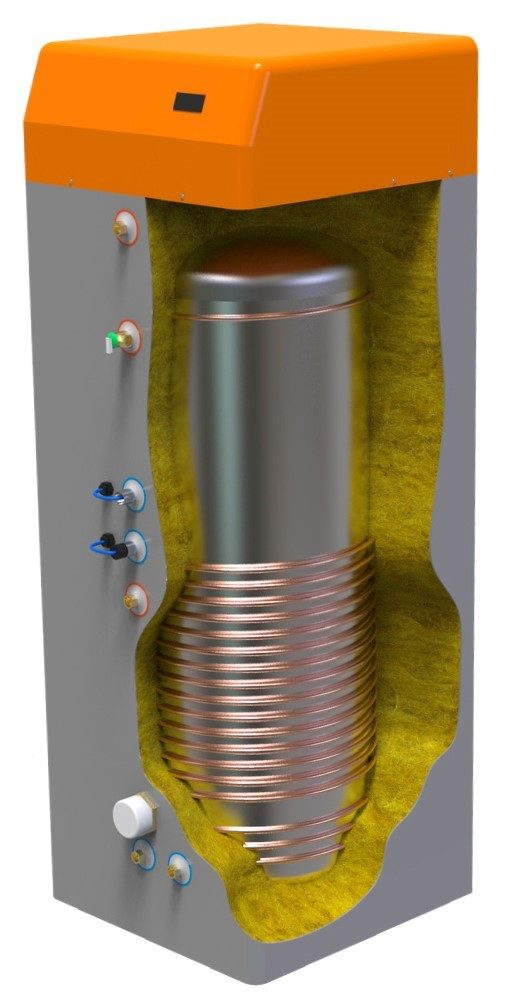
The chart below summarizes and compares electric water heating options, with pros and cons highlighted in green and red. Note incentives and technology are moving targets, so it’s a good idea to check with your architect or contractor to get the latest information.
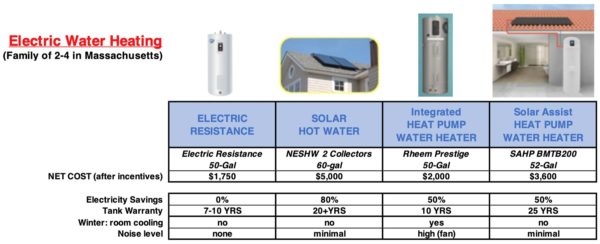

The owners of this attractive home were looking to reduce their environmental footprint as much as possible by powering the house with renewable energy. They installed a Solar Electric (PV) system but chose not to replace their space heating system with electric heat pumps.
Their existing domestic hot water system was an inefficient “tankless coil” connected to their oil-fired boiler that continuously cycled on and off during the non-heating season. Their PV system produced more electricity than they consumed, so they looked at electric water heating options. An electric resistance tank would consume more electricity than they produce with their PV system, and though they loved the idea of solar thermal, they had no space on their roof for collectors. So, they looked at heat pump water heaters. Common units were a problem due to the necessary placement of the tank in an inhabited room.
Their answer came when they discovered newly available “solar assisted heat pump water heaters” or SAHPs. These “split” units proved to be affordable and efficient and did not have problems associated with integrated units. The evaporator panel does not require direct sun, so it’s mounted on an exterior wall near the tank rather than on the roof. The unit has an integral electric element for backup during periods of extraordinary hot water usage or very cold weather. Even with occasional need for electric backup, the couple is looking to cover all electricity consumption with their existing PV system, thus getting domestic hot water from 100% renewable energy.
Contact: [email protected]
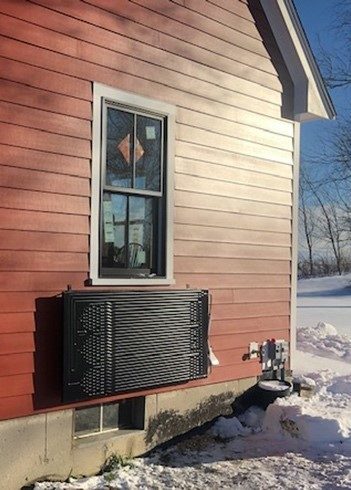
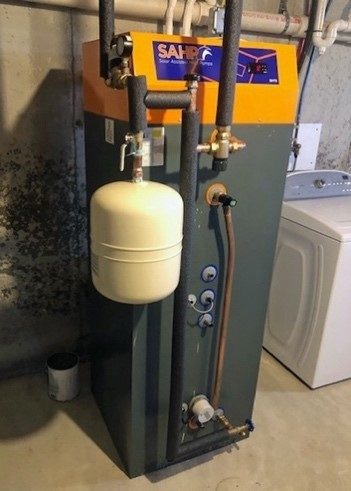
This article is one of many resources in the Homeowner's Project Handbook, which highlights the value that architectural expertise brings to new construction and renovation projects. Explore this free, sustainable, digital resource for homeowners and small business owners considering renovations, additions, or new construction projects.


